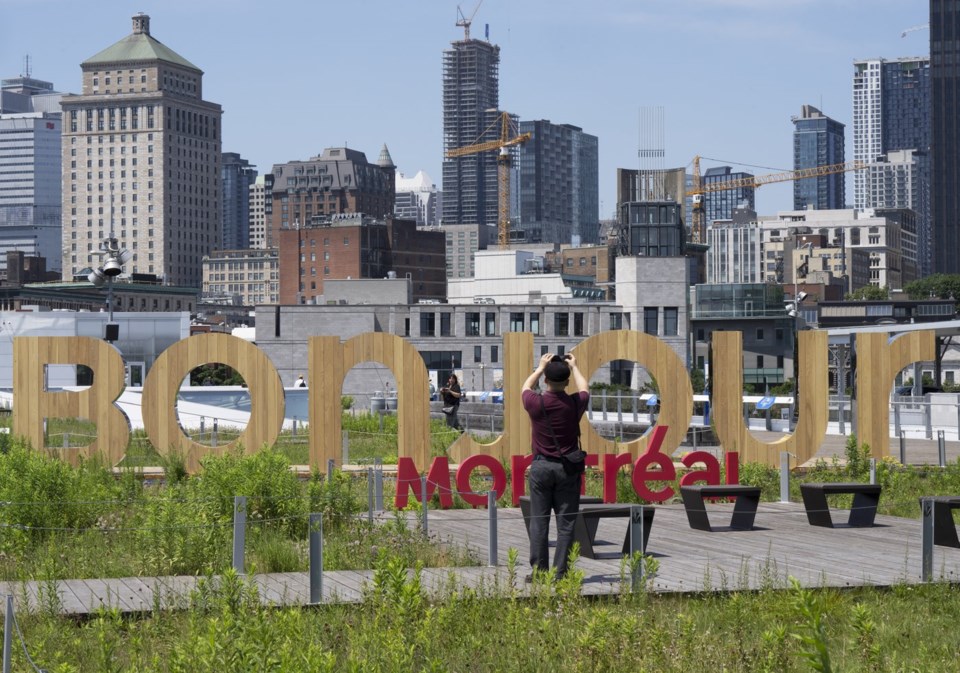MONTREAL ÔÇö A new report from QuebecÔÇÖs statistics institute says many of the province's regions grew at record or near-record paces between 2023 and 2024, due in large part to immigration, while deaths outnumbered births for the first time.
Montreal led the way in growth, adding more than 91,000 people between July 2023 and July 2024 for a 4.2-per-cent annual increase ÔÇö one of the highest ever recorded in any region.
"Montreal's growth alone accounts for 44 per cent of the total growth recorded in Quebec," the Institut de la statistique du Qu├®bec said Thursday in a news release. Quebec City set a new record at 2.4 per cent growth, while the city of Laval and the Outaouais and Mauricie regions followed closely behind.
The institute said the growth is due mostly to immigration, and temporary immigration in particular. Non-permanent residents, such as temporary workers, international students and asylum seekers, outnumbered newly admitted permanent residents in all regions and contributed to the majority of the growth, it noted.
The province added a total of about 208,000 people between July 2023 and July 2024, a population increase of 2.3 per cent ÔÇö the highest recorded for an equivalent period since comparable data collection began in the early 1970s. Every region in the province except the C├┤te-Nord grew, the report said.
"The majority of (regions) recorded one of their strongest growths, if not the strongest (since the data has been collected)," the authors wrote.
Ad├¿le Garnier, a geography professor at Universit├® Laval, said the report reflects a period when temporary immigration surged following the end of pandemic restrictions.
The data show "strong growth of this temporary immigration in a lot of regions, but especially in regions where there are universities or strong labour needs, so particularly strong in Montreal and Quebec City," she said in an interview.
She said it remains to be seen whether those trends will be reversed in coming years, following a strong push by the Quebec government to reduce temporary immigration. On the other hand, she said reductions could be countered somewhat by an incoming U.S. administration that is perceived as hostile to immigrants and could make sa╣·╝╩┤½├¢ a more attractive destination for high-skilled foreigners.
Premier François Legault has taken measures in recent months to slow the flow of temporary arrivals, citing a desire to protect the French language and relieve pressure on housing, education and health care.
Those announcements have included freezing some immigration streams, including for some low-wage temporary foreign workers and two programs that normally provide paths to permanent residency. Legault has also repeatedly called on the federal government to do more to limit the number of temporary newcomers arriving in the country and ensure asylum seekers are resettled more equally among the provinces.
Legault said last year that the number of temporary immigrants in Quebec had doubled to 600,000 from 300,000 in two years.
Quebec's total population was nearly 9.1 million people as of July 2024.
In its report, the institute also said the province recorded slightly more deaths than births during the one-year span between 2023 and 2024 ÔÇö the first time since data collection began that Quebec has had a natural population decline over the space of a year.
Deaths outnumbered births in 12 of the province's 17 regions, resulting in an overall balance of ÔÇè1,150 more deaths than births. However, Montreal, Laval, Mont├®r├®gie and Outaouais recorded more births than deaths. In the previous year, there had been 696 more births than deaths across the province.
Northern Quebec is the only region of the province where births remain the main contributor to population growth, the report added.
Garnier said she expects deaths to continue to outpace births in the coming years, since the province's birthrate falls well below replacement rate. That means Quebec will remain an aging society that will continue to be dependent on immigrants for growth, she said.
"But eventually, immigrants will age too, so that will be a long-term challenge," she said.
This report by The Canadian Press was first published Jan. 16, 2025.
Morgan Lowrie, The Canadian Press



